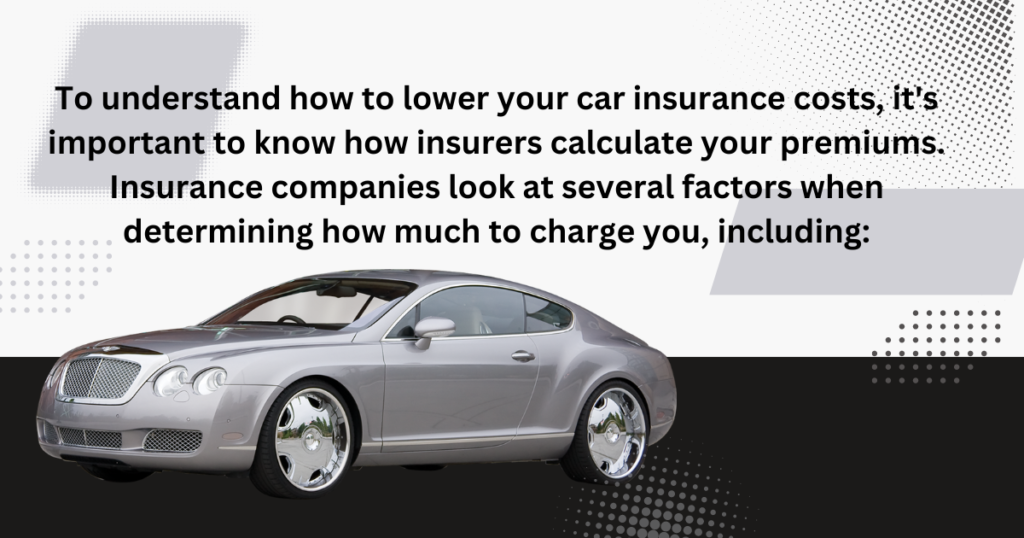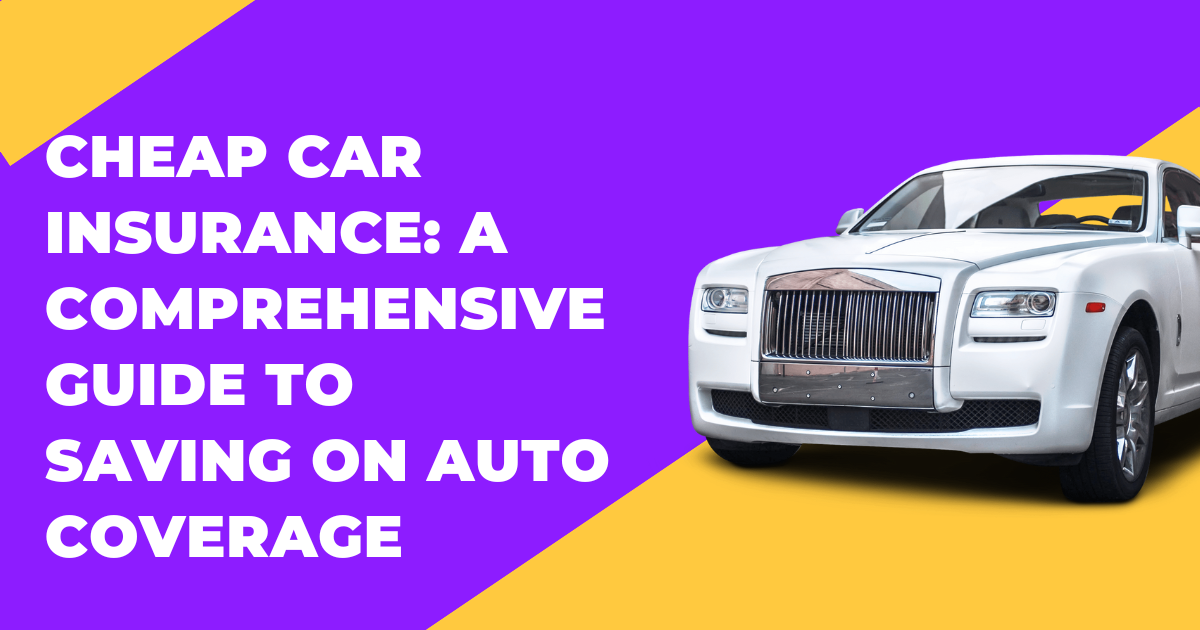Car insurance is a necessary expense for every driver. While it’s essential for protecting yourself, your vehicle, and others on the road, it can also be one of the costliest recurring bills. Fortunately, finding cheap car insurance without compromising on coverage is possible, especially if you know where to look and how to take advantage of available discounts and strategies. This guide will walk you through everything you need to know about getting affordable car insurance, from understanding how premiums are calculated to actionable tips for lowering your costs.
What is Car Insurance?
Car insurance is a contract between you and an insurance company that offers financial protection in case of accidents, theft, or other damage to your vehicle. Depending on the policy you choose, car insurance can cover damages to other vehicles, property, or people involved in an accident, as well as your vehicle.
While liability coverage is often mandatory, many states and countries require minimum levels of car insurance. It’s crucial to carry enough coverage to protect yourself, but it’s also important not to overpay for more than you need.
How Car Insurance Premiums are Calculated

- Driving Record: A clean driving history, free of accidents and violations, usually results in lower premiums. On the other hand, drivers with multiple infractions can expect to pay more.
- Location: Where you live plays a significant role in the price of your car insurance. Urban areas with higher rates of traffic accidents, theft, and vandalism tend to have higher premiums than rural areas.
- Vehicle Type: Insurers consider the make, model, age, and condition of your vehicle. High-performance or luxury cars tend to cost more to insure due to the higher cost of repairs or replacement. Vehicles with higher safety ratings often result in lower premiums.
- Age and Gender: Statistically, younger drivers, especially those under 25, tend to have more accidents, leading to higher rates. Men, particularly younger men, also tend to pay more for insurance than women.
- Credit Score: In many regions, insurers use your credit score as an indicator of risk. A good credit score can lower your premiums, while a low score may lead to higher rates.
- Mileage: The more you drive, the higher your risk of being involved in an accident. Low-mileage drivers often qualify for discounts.
- Coverage Level: Opting for higher coverage limits or adding extra coverage such as comprehensive or collision will increase your premiums. Conversely, choosing a higher deductible can lower your monthly payments.
Tips for Finding Cheap Car Insurance
While you may not be able to change some factors that affect your insurance premiums, there are plenty of ways to lower your costs without sacrificing necessary coverage.
1. Shop Around and Compare Quotes
Different insurance companies offer different rates, even for similar coverage. It pays to shop around and get multiple quotes from various providers. Use comparison websites to save time, or work with an independent insurance broker who can provide you with several options.
2. Bundle Your Policies
Many insurance companies offer discounts if you bundle multiple policies together, such as car and home insurance. Bundling is convenient and can save you anywhere from 5% to 25% on your premiums.
3. Increase Your Deductible
Your deductible is the amount you pay out-of-pocket before your insurance coverage kicks in. By choosing a higher deductible, you can significantly lower your monthly or annual premium. Just be sure you have enough savings set aside to cover the deductible in case of an accident.
4. Take Advantage of Discounts
Insurance companies offer various discounts that can help lower your premiums. Some common discounts include:
- Good Driver Discount: If you have a clean driving record for a certain number of years, you may qualify for this discount.
- Multi-Car Discount: Insuring more than one vehicle with the same company can lead to savings.
- Low Mileage Discount: If you drive fewer miles than the average driver, you may be eligible for this discount.
- Good Student Discount: If you or a young driver on your policy is a full-time student with good grades, some insurers offer discounts for academic performance.
- Safety Features Discount: Vehicles equipped with anti-theft systems, airbags, and other safety features can qualify for lower premiums.
- Defensive Driving Course Discount: Completing a defensive driving course may reduce your insurance costs.
- Telematics Discount: Some insurers offer discounts if you allow them to monitor your driving habits through a mobile app or a device installed in your car.
5. Maintain a Good Credit Score
In regions where credit score affects your insurance rates, improving your credit score can lead to lower premiums. Pay your bills on time, reduce outstanding debt, and keep your credit card balances low.
6. Opt for Usage-Based Insurance
Usage-based insurance (UBI) is a type of policy where your premiums are based on how and how much you drive. A telematics device or smartphone app tracks your driving habits, such as mileage, speed, braking, and time of day you drive. If you’re a safe driver who doesn’t drive much, UBI can save you money.
7. Drive a Safer, Cheaper Vehicle
When shopping for a car, consider insurance costs as part of your decision. Vehicles with higher safety ratings, lower theft rates, and more affordable repair costs tend to have lower insurance premiums. You can check the insurance cost for different vehicle models before making a purchase.
8. Pay Your Premiums Annually
While most insurance companies allow you to pay your premium monthly, many offer a discount if you pay for the entire year upfront. If you can afford it, this is an easy way to save.
9. Avoid Unnecessary Coverage
While you want to make sure you’re adequately covered, you should also review your policy to ensure you’re not paying for coverage you don’t need. For example, if you drive an older car, you might consider dropping collision or comprehensive coverage, especially if the cost of the coverage exceeds the value of the car.
10. Monitor Your Coverage Regularly
Your insurance needs may change over time, so it’s essential to review your policy regularly. If your situation changes, such as moving to a safer neighborhood, reducing your driving, or selling an additional vehicle, you could be eligible for lower premiums. Don’t be afraid to ask your insurer to re-evaluate your rates based on these changes.
State Minimum Coverage vs. Full Coverage: What’s the Difference?
When searching for cheap car insurance, you’ll often come across terms like state minimum coverage and full coverage. Understanding the difference between the two can help you make an informed decision on how much insurance you need.
- State Minimum Coverage: This is the least amount of car insurance you can carry and still comply with your state’s laws. It usually only includes liability coverage, which pays for damages you cause to other people or property in an accident. While state minimum coverage is the cheapest option, it doesn’t cover damages to your own vehicle.
- Full Coverage: This term generally refers to a combination of liability, comprehensive, and collision coverage. Comprehensive coverage protects against non-accident-related damage (such as theft or natural disasters), while collision coverage pays for damage to your vehicle in an accident, regardless of fault. Full coverage costs more than state minimum coverage but offers greater protection.
Is Full Coverage Necessary?
Whether you need full coverage depends on your individual situation. If you’re driving a newer or more expensive vehicle, full coverage is usually worth the extra cost. However, if your car is older and its value is low, you might opt for state minimum coverage to save money. Be sure to calculate whether the cost of the premiums for full coverage is more than what your car is worth.
Myths About Cheap Car Insurance
There are many misconceptions about cheap car insurance that can make it harder to find a policy that works for you. Here are some common myths:
- Myth 1: Cheap insurance means bad coverage: You can still get good coverage with a lower premium by comparing policies, taking advantage of discounts, and being a safe driver.
- Myth 2: My insurance costs will always be high: While certain factors, like your driving history or location, may affect your premiums, there are always ways to lower your insurance costs.
- Myth 3: Only young drivers can save on insurance: Drivers of all ages can find discounts, especially by maintaining a good driving record and choosing the right coverage.
Conclusion
Cheap car insurance doesn’t have to mean poor coverage. By understanding how insurers calculate your premiums, taking advantage of discounts, and adjusting your coverage to fit your needs, you can find affordable car insurance that still provides the protection you require. Shopping around, bundling policies, increasing your deductible, and driving safely are just a few ways to save on your car insurance without sacrificing peace of mind.
Remember, cheap car insurance is about finding a balance between cost and coverage. Use the tips and strategies in this guide to get the best deal possible, ensuring you stay protected on the road while keeping more money in your pocket.
